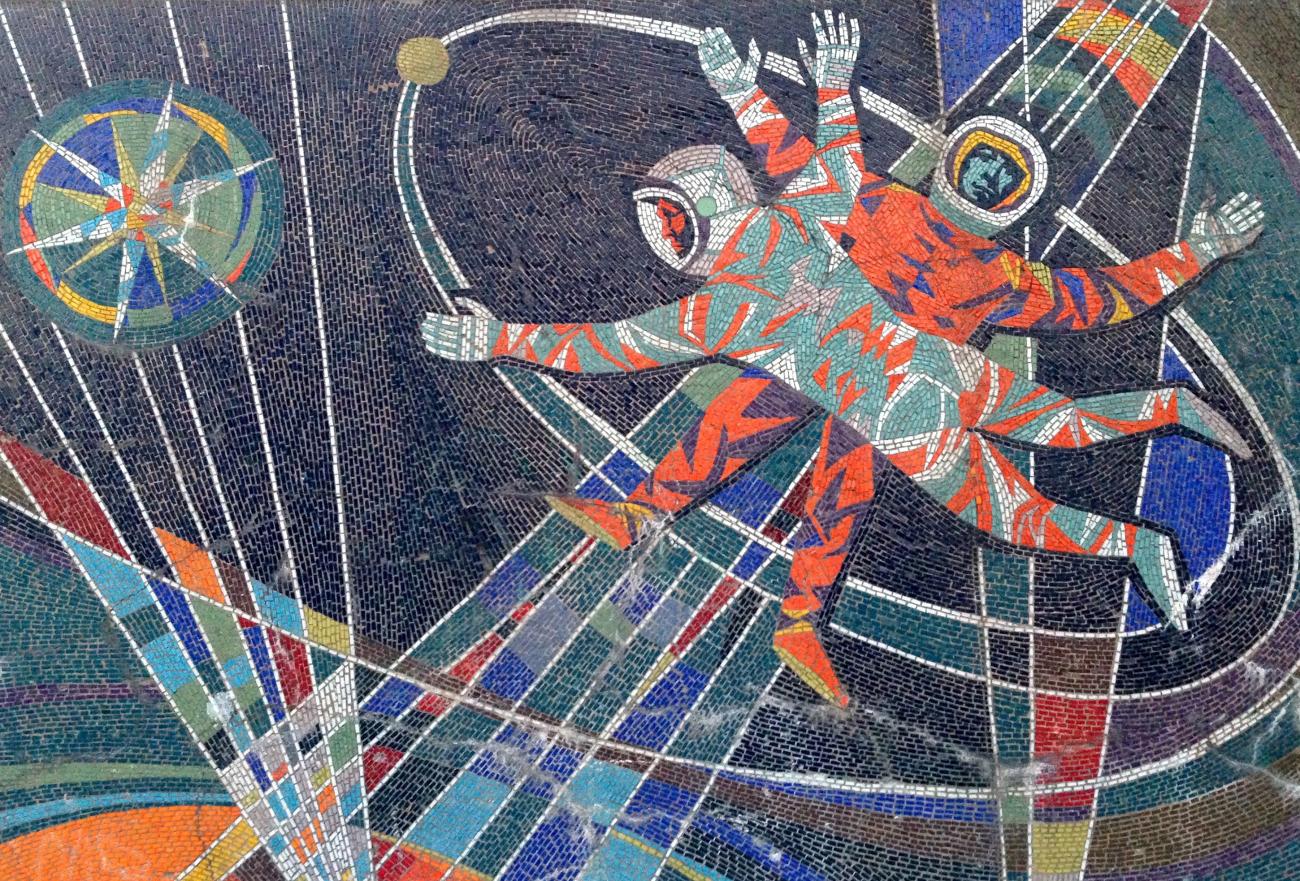Urban Renewal of Utopia
Samantha Fox's research focuses on the urban renewal of Eisenhüttenstadt, a German city constructed and shaped by socialist ideals in the 1950s
In 1950, East German socialists built the city of Eisenhüttenstadt, now Germany’s largest architectural heritage site. Designed on a drawing board, it was constructed to be a utopian city shaped by socialist ideals. Since the fall of the Berlin Wall in 1989, municipal leaders have worked to revitalize their city, and this urban renewal is the focus of research by anthropologist Samantha Fox.
Socialist architecture is often seen as large, prefabricated concrete apartment blocks in uniform gray. But, most of Eisenhüttenstadt was built at an earlier time of monumental and experimental architectural style, says Fox. The city center is built in a style that is often called the Stalinist wedding cake because many buildings have ornate tiered construction.
East German architects and planners imagined themselves as managers of total space. Their goals were to maximize social engagement among residents and to infuse architecture, the built environment and the natural world with a sense of harmony that instilled pride in the socialist project, says Fox, assistant professor of anthropology in the department of sociology and anthropology. Capitalist architects, in the socialist imagination, designed isolated urban elements with the goal of maximizing profit for the builder or investor. Eisenhüttenstadt’s planners had no concern about profitability.
“You could build the perfect social environment without worrying about if this also is a moneymaking venture,” Fox says. “The initial planning paid attention to the sort of social world that the built environment is intended to produce.”
After Germany’s reunification, Eisenhuttenstadt’s population decreased by 50 percent, as steel production was privatized. In response, the government embarked on an urban renewal program that explicitly draws its inspiration from Eisenhüttenstadt’s socialist history. Many apartment blocks were demolished in underpopulated areas, and people were moved to renovated and restored housing in the inner city. The goal was to revitalize housing complexes that originally fulfilled the needs of young families and redesign them to accommodate the needs of the elderly. The success of Eisenhüttenstadt’s city center revitalization highlights the importance of drawing inspiration from alternative models of urban living and connecting with local histories.
Fox’s research demonstrates that both residents and architects in Eisenhüttenstadt conceived the city—particularly after reunification—as a social project that relied on the built environment for its conditions of possibility.
“It’s a sort of model of urban thriving that’s not predicated on growth,” Fox says. “We have this idea that urban renewal must require population growth and economic growth to some degree, but can you have urban renewal without restoring that population loss?”

